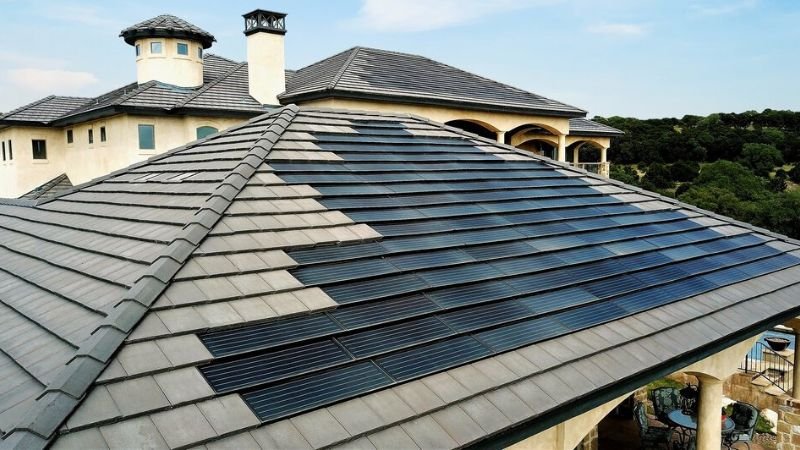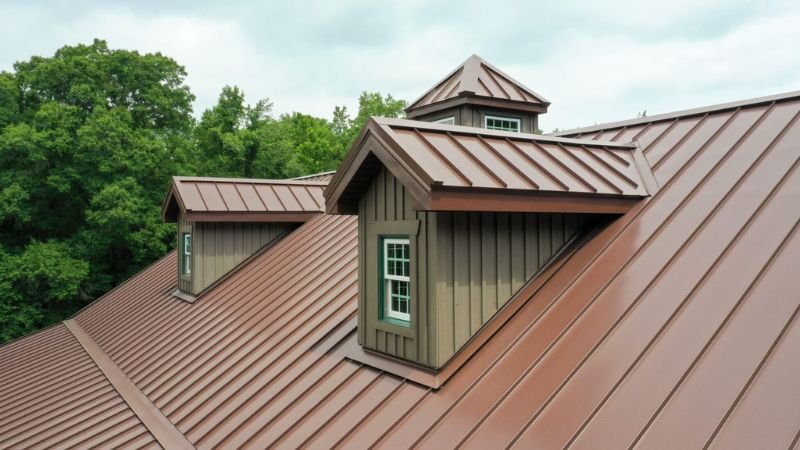Proper roof ventilation is essential for maintaining the health and efficiency of your home. By allowing air to circulate freely, roof ventilation prevents the buildup of heat and moisture, which can lead to various problems such as mold growth, structural damage, and increased energy costs. The nine main advantages of adequate roof ventilation will be discussed in this blog, ranging from increased roof longevity to better indoor air quality. Understanding these advantages can help homeowners make informed decisions about their roofing systems, ensuring a comfortable and durable living environment.
9 Benefits of Proper Roof Ventilation
1. Extends the Lifespan of Your Roof
Appropriate roof Ventilation keeps heat and moisture from building up, which greatly increases the longevity of your roof. In poorly ventilated attics, heat can reach extreme levels, causing roofing materials to deteriorate prematurely. Asphalt shingles, for example, can become brittle and crack, leading to leaks and costly repairs. Moisture is another major concern; without adequate ventilation, condensation forms on the underside of the roof, promoting the growth of mold and mildew. This not only weakens the structural integrity of your roof but also poses health risks to your family. By ensuring a steady flow of air, proper ventilation keeps your roofing materials in better condition for longer, saving you money on repairs and replacements.
Also Read: 7 Key Benefits of Professional Roof Installation
2. Reduces Energy Costs
A well-ventilated roof helps in reducing energy costs by maintaining a balanced temperature inside your home. During hot summer months, a poorly ventilated attic can trap heat, causing your air conditioning system to work harder to keep the house cool. This results in higher energy bills and unnecessary strain on your HVAC system. In winter, proper ventilation helps prevent the formation of ice dams, which can damage your roof and insulation. By allowing cool, fresh air to circulate and expel hot, stale air, roof ventilation reduces the load on your heating and cooling systems, leading to more efficient energy use and lower utility bills throughout the year.
3. Improves Indoor Air Quality
Proper roof ventilation plays a crucial role in improving indoor air quality. When moisture accumulates in an inadequately ventilated attic, it creates an ideal environment for mold and mildew to thrive. These fungi can release spores into the air, which can infiltrate your living spaces and cause respiratory problems, allergies, and other health issues. Additionally, poor ventilation can lead to the buildup of harmful chemicals and pollutants that originate from household products and building materials. By ensuring a consistent flow of fresh air, roof ventilation helps remove these contaminants, providing a healthier and more comfortable indoor environment for you and your family.
4. Prevents Structural Damage
Proper roof ventilation prevents structural damage by mitigating the effects of heat and moisture on your home’s framework. Excessive heat can warp wooden beams and joists, while moisture can cause wood to rot and metal components to rust. Over time, this can compromise the stability of your entire roof structure, leading to expensive repairs or even a complete roof replacement. Ventilation helps maintain optimal temperature and humidity levels in your attic, preserving the integrity of your home’s structural elements. This preserves the overall safety and value of your house in addition to lengthening the life of your roof.
5. Enhances Attic Insulation Performance
Proper ventilation enhances the performance of your attic insulation by keeping it dry and effective. When moisture accumulates in the attic, it can saturate the insulation material, reducing its ability to resist heat transfer. Wet insulation loses its R-value, the measure of its thermal resistance, leading to increased energy consumption as your heating and cooling systems struggle to maintain comfortable indoor temperatures. By promoting air circulation and preventing moisture buildup, roof ventilation helps your insulation work more efficiently, maintaining its effectiveness in regulating your home’s temperature and reducing energy costs.
6. Reduces the Risk of Ice Dams
Proper roof ventilation is essential in reducing the risk of ice dams during winter. Ice dams form when warm air from the attic melts snow on the roof, which then refreezes at the edges, creating a barrier that prevents proper drainage. Water may build up under the shingles as a result, resulting in leaks and indoor water damage to your house. By maintaining a cold roof temperature through adequate ventilation, you can prevent the formation of ice dams. This not only protects your roof from potential damage but also ensures that melting snow and ice are properly channeled away from your home, safeguarding your property during harsh winter conditions.
7. Increases Comfort Levels
Proper roof ventilation increases comfort levels inside your home by regulating indoor temperatures more effectively. Inadequate ventilation can lead to hot, stuffy attics in the summer and cold, damp spaces in the winter, both of which can affect the comfort of your living areas. By allowing air to circulate freely, ventilation helps maintain a consistent temperature throughout your home, making it more comfortable year-round. This means fewer hot and cold spots, more stable indoor climates, and a more enjoyable living environment for you and your family.
8. Supports Solar Panel Efficiency
For homeowners with solar panels, proper roof ventilation supports the efficiency of these systems. Solar panels can generate a significant amount of heat, which, if not properly ventilated, can lead to increased attic temperatures and reduced efficiency of the panels themselves. By ensuring proper airflow, roof ventilation helps dissipate this excess heat, allowing solar panels to operate more efficiently. This not only maximizes the energy production from your solar system but also helps maintain the longevity of both your roof and the panels, providing long-term benefits for your investment in renewable energy.
9. Enhances Home Value
Proper roof ventilation can enhance your home’s value by contributing to its overall condition and energy efficiency. Potential buyers are often interested in homes that require less maintenance and have lower utility costs. A well-ventilated roof indicates that the home has been properly maintained, reducing the likelihood of future issues related to mold, mildew, and structural damage. Additionally, the energy savings associated with proper ventilation can be a significant selling point. By investing in a well-ventilated roofing system, you not only protect your home but also increase its market appeal and value.
Also Read: How to Choose Your Roofing Underlayment?
Conclusion
Proper roof ventilation offers numerous benefits that enhance the comfort, efficiency, and longevity of your home. From reducing energy costs to preventing costly repairs, investing in a well-ventilated roof is a wise decision for any homeowner. By maintaining a balanced airflow, you can protect your roof and ensure a healthier indoor environment. Consider evaluating your current roof ventilation system to take full advantage of these benefits and enjoy a more comfortable living space.
FAQs
What does roof ventilation entail, and what makes it crucial?
Roof ventilation is the process of allowing air to flow through the attic or roof space, which helps regulate temperature and moisture levels. It is important because it prevents damage caused by heat and moisture buildup, prolongs the life of your roof, and improves energy efficiency.
How can I tell if my roof has proper ventilation?
Signs of proper roof ventilation include a consistent temperature throughout the house, no visible mold or mildew in the attic, and no ice dams in winter. If you notice uneven temperatures, mold growth, or ice dams, your roof may need better ventilation.



